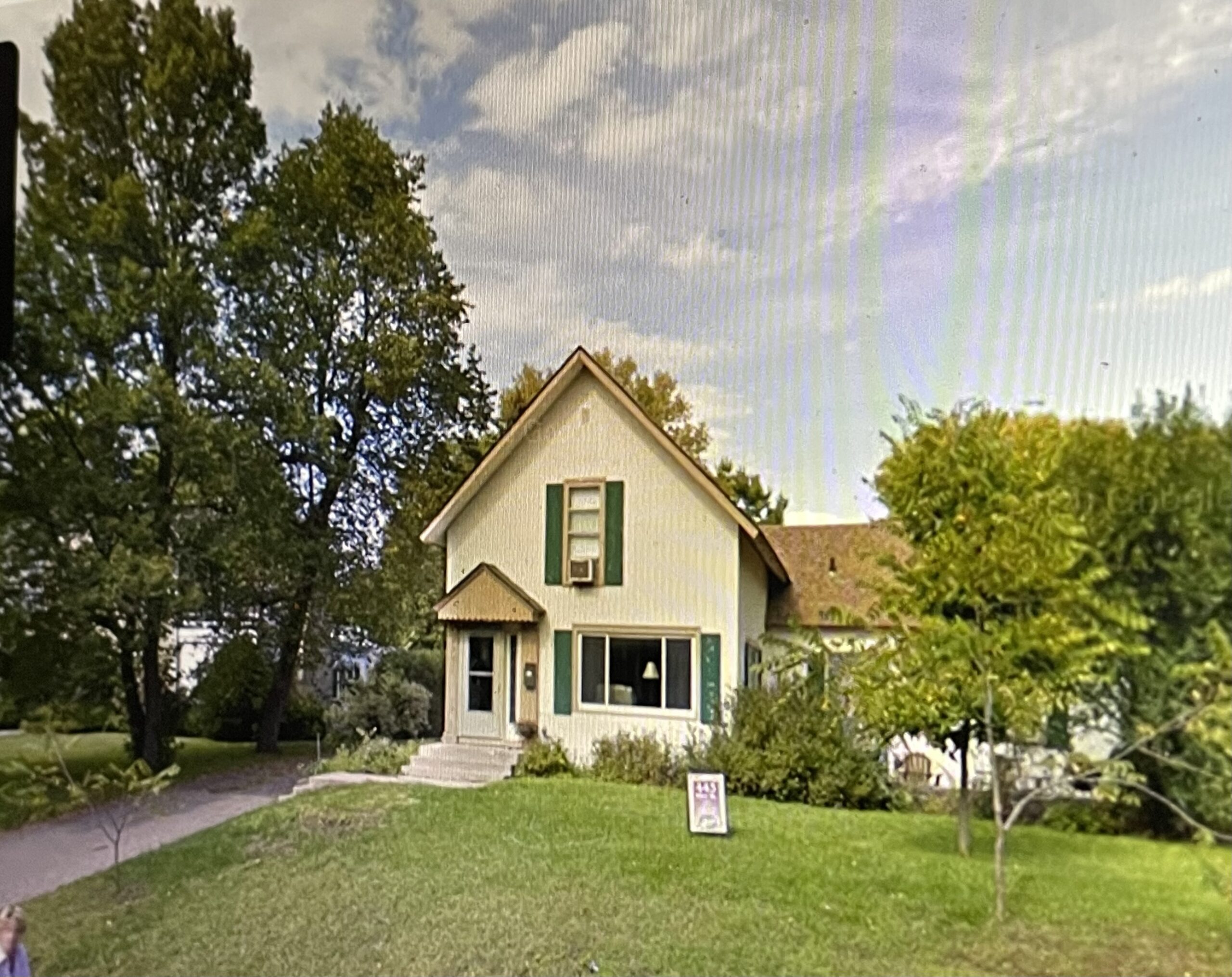APRIL 13, 2024 – (Cont.)The house next door to Johnsons changed hands three time from 1954, the time we moved to the neighborhood, to 1968, when I flew the coop for boarding school, later college, then the world.
When we moved to Rice Street, the Ridges—Will and Ginna, Becky, Johnny and three years later, Tommy—occupied the old stucco house next to Johnsons. The house was far more modest than Johnsons’ on the one side and Perkins’ on the other, but the lot was nearly the combined size of the two adjoining yards along Rice Street. Plus, the Ridge’s lot was nearly one with the lot behind it, which is where Ginna’s mother, Mrs. Gagnon lived.
The three Ridge kids matched up in age with my older sister Elsa (Becky), me (Johnny), and my younger sister Jenny (Tommy), so we often followed them when they visited their grandmother, which was at least once a day. She looked very old, and as I understood things until I realized I didn’t, she was “from the Civil War.” In fact, it was one of her Anoka forebears, Aaron Greenwald, who on April 15, 1861 was among the first seven (all from Anoka) in the nation to volunteer for the Union Army. He died at Gettysburg on July 3, 1863 after taking a musket ball to the head as he helped hold the line against Pickett’s Charge. The main part of Ridge’s house, we were told, had been built the year Minnesota became a state—three years before Lincoln was elected President.
My sisters and I alternated between calling the Ridge’s grandmother “Mrs. GAG-non” and “Mrs. GAN-non,” until one day Elsa told us it was really “GANG-noh,” which she probably learned from our oldest sister who learned it from our mother, who’d actually taken French in school. When I asked Johnny, he responded with a quizzical look. To him, Mrs. Gagnon was simply his grandmother.
We were frequent visitors at both the Ridge’s house and Mrs. Gagnon’s, where we played Yahtzee and dined on cookies.
The positively amazing thing about the Ridge’s and their residence on our street was the “small world story” that it generated one evening in the fall of 1954. Dad had been newly appointed to his position as clerk of court on August 5, and shortly after I was born, on August 7, our family moved to Anoka. Soon thereafter, in the course of meeting folks who worked at the courthouse, Dad met an outgoing woman who welcomed him to town and asked where he and mother had found a house. When Dad said “At the corner of Rice Street and Green Avenue,” the woman exclaimed, “Why, that’s just two doors down from our house! You should stop by some evening.”
That evening, in fact, my parents—probably with my two sisters in tow and me in a baby buggy—strolled down their driveway, along our curb, across Green Avenue, past Johnson’s dwelling to the driveway that sloped up to the house bearing the number 443, which is the number the courthouse woman had given Dad.
Less than half a minute after Dad rang the doorbell, a man opened the door. “Will!” my mother said full of surprise.
“Orrell!” Will said with equal surprise.
It turned out that the “courthouse woman” was married to Will Ridge, an aeronautical engineer who during WW II had worked right next to Mother doing stress analyses on fighter plane propellers at the Curtiss-Wright plant in Caldwell, New Jersey.
The Ridges were smart and solid people, and I was fascinated by Ginna’s bright conversational style and Will’s serious, gravely, authoritative voice, and the way he wielded a pipe. His self-confidence was inversely proportionate to his short stature.
Becky was as smart as Elsa, and Johnny was deeply engaged in everything we decided to play, especially some form of baseball in their big yard, shaded by maple trees. I didn’t have much time for Tommy, since he was Jenny’s speed, which I considered way too slow.
Apparently, after the war Will has switched from aeronautical to civil engineering and taken a job as Anoka’s city engineer. His purview, I remember, included the cleaning of city streets by the strange and frightening street sweeper equipped with the massive brush on front and the large single wheel in back. When the machine came whining down the street, Johnny grabbed would grab my arm and tell me to run as fast as I could away from the monster. He then warned me to hold my breath until the sweeper passed; otherwise, he said, we’d breathe in “poisonous dust.” I still reflexively hold my breath whenever I see one of those street cleaners.
Unfortunately for us, the Ridges moved when Johnny and I were about seven. Will had been hired as the city engineer for St. Cloud, a town in central Minnesota of around 26,000—double the size of Anoka. A few years later, he took a much bigger job as the Minneapolis city engineer. I remember visiting the Ridges several times after they’d moved to Minneapolis and thought their big, brick colonial home compared favorably with the Johnson’s house next door to Ridge’s home on Rice.
Before and after Ridges moved from Anoka, we were their occasional guests at their grandparents’ cottage on the south shore of Lake George about 30 minutes north of Anoka. They liked to fish for sunnies, and so our visits invariably involved short fishing expeditions—short because their lake wasn’t that big. After pushing worms onto our hooks, we’d toss the lines into the weedy lake and watch for the bobbers to signal that the fish were biting. Whatever we caught usually got cleaned and cooked by the grown-ups. I never developed much of a taste for sunfish and most times pretended I wasn’t hungry, even though I was. (Cont.)
Subscribe to this blog and receive notifications of new posts by email.
© 2024 by Eric Nilsson
